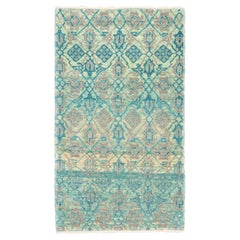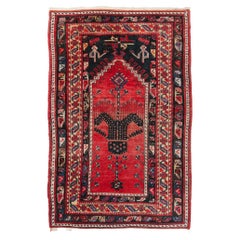Rugs
21st Century and Contemporary Turkish Revival Rugs
Wool, Natural Fiber, Organic Material
21st Century and Contemporary Turkish Revival Rugs
Wool, Natural Fiber, Organic Material
Early 20th Century Turkish Oushak Rugs
Organic Material, Wool, Natural Fiber
Early 1900s American Antique Rugs
Wool, Cotton
21st Century and Contemporary Turkish Revival Rugs
Wool, Natural Fiber, Organic Material
Early 20th Century Turkish Oushak Rugs
Wool, Natural Fiber, Organic Material
21st Century and Contemporary Turkish Oushak Rugs
Wool, Natural Fiber, Organic Material
21st Century and Contemporary Turkish Revival Rugs
Wool, Natural Fiber, Organic Material
21st Century and Contemporary Turkish Revival Rugs
Wool, Natural Fiber, Organic Material
21st Century and Contemporary Turkish Revival Rugs
Wool, Natural Fiber, Organic Material
21st Century and Contemporary Turkish Revival Rugs
Wool, Natural Fiber, Organic Material
21st Century and Contemporary Turkish Revival Rugs
Wool, Natural Fiber, Organic Material
21st Century and Contemporary Turkish Oushak Rugs
Wool, Natural Fiber, Organic Material
Early 20th Century Turkish Kilim Rugs
Wool, Natural Fiber, Organic Material
Early 20th Century Turkish Oushak Rugs
Wool, Natural Fiber, Organic Material
21st Century and Contemporary Turkish Oushak Rugs
Wool, Natural Fiber, Organic Material
21st Century and Contemporary Turkish Revival Rugs
Wool, Natural Fiber, Organic Material
2010s Turkish Revival Rugs
Wool, Natural Fiber, Organic Material
Early 20th Century American Navajo Rugs
Wool
21st Century and Contemporary Turkish Revival Rugs
Wool, Natural Fiber, Organic Material
Early 20th Century Turkish Kilim Rugs
Wool, Natural Fiber
21st Century and Contemporary Turkish Oushak Rugs
Wool, Natural Fiber, Organic Material
21st Century and Contemporary Turkish Oushak Rugs
Wool, Natural Fiber, Organic Material
21st Century and Contemporary Turkish Revival Rugs
Wool, Natural Fiber, Organic Material
21st Century and Contemporary Turkish Oushak Rugs
Wool, Natural Fiber, Organic Material
21st Century and Contemporary Turkish Revival Rugs
Wool, Natural Fiber, Organic Material
Early 20th Century Turkish Kilim Rugs
Wool, Natural Fiber, Organic Material
21st Century and Contemporary Turkish Revival Rugs
Wool, Natural Fiber, Organic Material
21st Century and Contemporary Turkish Revival Rugs
Wool, Natural Fiber, Organic Material
21st Century and Contemporary Turkish Oushak Rugs
Wool, Natural Fiber, Organic Material
21st Century and Contemporary Turkish Revival Rugs
Wool, Natural Fiber, Organic Material
21st Century and Contemporary Turkish Revival Rugs
Wool, Natural Fiber, Organic Material
21st Century and Contemporary Turkish Revival Rugs
Wool, Natural Fiber, Organic Material
21st Century and Contemporary Turkish Revival Rugs
Wool, Natural Fiber, Organic Material
Early 20th Century Turkish Kilim Rugs
Wool, Natural Fiber
Early 20th Century Turkish Oushak Rugs
Wool, Natural Fiber
21st Century and Contemporary Turkish Revival Rugs
Wool, Natural Fiber, Organic Material
21st Century and Contemporary Turkish Revival Rugs
Wool, Natural Fiber, Organic Material
2010s Turkish Revival Rugs
Wool, Natural Fiber, Organic Material
21st Century and Contemporary Turkish Revival Rugs
Wool, Natural Fiber, Organic Material
2010s Turkish Revival Rugs
Wool, Natural Fiber, Organic Material
21st Century and Contemporary Turkish Revival Rugs
Wool, Natural Fiber, Organic Material
21st Century and Contemporary Turkish Revival Rugs
Organic Material, Wool, Natural Fiber
21st Century and Contemporary Turkish Revival Rugs
Wool, Natural Fiber, Organic Material
21st Century and Contemporary Turkish Revival Rugs
Wool, Natural Fiber, Organic Material
2010s Italian Post-Modern Rugs
Silk
2010s Italian Post-Modern Rugs
Silk
21st Century and Contemporary Turkish Revival Rugs
Wool, Natural Fiber, Organic Material
2010s Italian Post-Modern Rugs
Silk
Early 20th Century American Adirondack Rugs
Wool
21st Century and Contemporary Turkish Revival Rugs
Wool, Natural Fiber, Organic Material
21st Century and Contemporary Turkish Revival Rugs
Natural Fiber, Organic Material, Wool
21st Century and Contemporary Turkish Revival Rugs
Wool, Natural Fiber, Organic Material
21st Century and Contemporary Turkish Oushak Rugs
Wool, Natural Fiber, Organic Material
2010s Italian Post-Modern Rugs
Silk
2010s Italian Post-Modern Rugs
Wool
2010s Italian Post-Modern Rugs
Wool
Early 20th Century American Navajo Rugs
Wool




